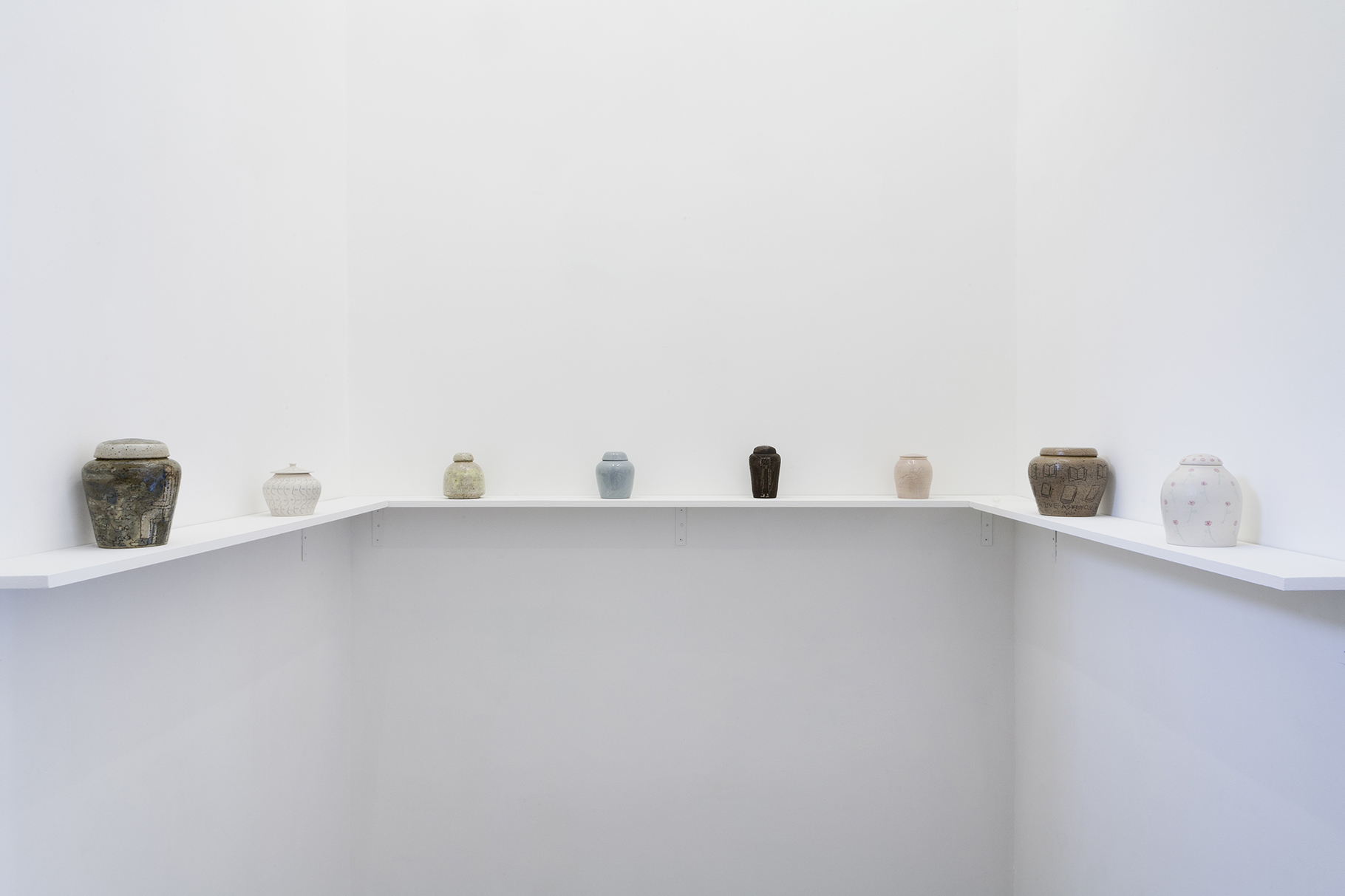Shows
An Gee Chan’s “Go On Without Me”


If, as Walter Benjamin laid out in his 1936 book The Work of Art in the Age of Mechanical Reproduction, photography is the form to divest art of its aura, the process of mono-screen printing imbues works with an almost awe-inspiring weight. Even more so than with an image painted directly to a surface, this technique of applying ink to a featureless silkscreen and then impressing it on paper emphasizes a single artistic attempt. The moment of intense precarity in which the unrepeatable image is transferred, irrevocably corrupted, and in these two processes realized, creates a powerful sense of intimacy that remains in the final picture.
This effect is prominent in a new series of screen prints by An Gee Chan at London’s Tintype Gallery. Mounted on two opposing walls, the seven prints of ink on somerset satin paper—each between 180 and 240 centimeters in height—are portraits, perhaps even self-portraits. In the majority of these works, Chan consummately pushes the abstraction of the human face to its limits while retaining a consistent emotional core. One of the most notable, and extreme, examples of this is I Don't Know (all paper works 2017), in which an array of mostly horizontal streaks of ink in different shades of gray culminates in a vague image of a head on shoulders. From beneath the streaks, which, in their layering, have the effect of bandages, two small, awkwardly placed white eyes peer from the middle of the central head-like form, providing an index for the remaining physiognomy. The ambiguity in the rest of the image is what provides its appeal. A black mark or curved stroke beneath the eyes may be an upturned nose or a diffident smile—the figure’s expression is renewed with each refocusing of the eye. Mad, a nexus of arterial white lines on a raw, fleshy-pink background, is similarly expressive, albeit less generative. Here the features are more defined, and from the two white eyes and smudge of black below them emerges a countenance of confusion and blank despair.
One of the small exhibition’s most technically impressive and aesthetically self-contained works was Feisty. Streaks of white and icy blue of various thicknesses condense from a deep black background into an ethereal form. Eyes and mouth are once again visible. They appear not to be additions to the face, but, rather, omissions that rely on the contrast of the dark background shining through for their definition, adding to the distant ghostliness of this figure, whose most expressive features are a product of absence.
Not all of the works are close-ups. In two of the prints, Chan displays a control of spatiality that is not easily achieved in her chosen medium. Poorly depicts a person lying in half-fetal position on a slightly slanted rectangular bed, as seen from above. The lack of differentiation in tone and hue between background, furniture and figure has an expressionistic quality, exposing the fading strength of the sickly character as they give themselves up to the world, reflecting Chan’s preoccupation in these works with illness and its consequences, seeded perhaps by the death of her grandmother. In another work, Share, where two figures appear to lie side-by-side, Chan further illustrates her control over the monotype process by creating an impressively subtle sense of illumination. With the use of white, blue and cream, and some surprisingly sharp lines, the illusion of light she achieves lends the work as a whole an appearance of depth that throws its two figures into almost comic contrast.

This comic sensibility, so prominent in Chan’s earlier work, is by no means absent from the seemingly solemn examples on display in “Go On Without Me”—in an accompanying collection of ceramic urns etched with phrases and images in a simple, even naïve style, the exhibition shows it off to strong effect. These urns, however, are also a reference to illness, and the death of Chan’s grandmother, and thus exemplify the artist’s capacity to express comedy through tragedy, and vice versa.
Ned Carter Miles is ArtAsiaPacific’s London desk editor.
An Gee Chan’s “Go On Without Me” is on view at Tintype Gallery, London, until May 26, 2018.







